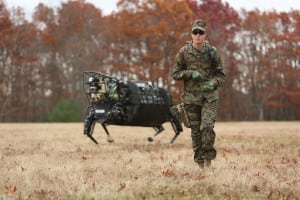
In the pursuit of technologies like autonomous robotics and tactical electronic warfare that will change the fundamental character of combat, the Army should be on the front lines, its most senior civilian and uniformed officer told lawmakers on Thursday.“We need to lead from the front. We’re talking about leap-ahead technologies,” acting Army Secretary Patrick Murphy said during a Senate Armed Services Committee hearing on April 7. “Our peer competitors are investing in those things, too,” Murphy said. “We can’t be…

 By
By 











